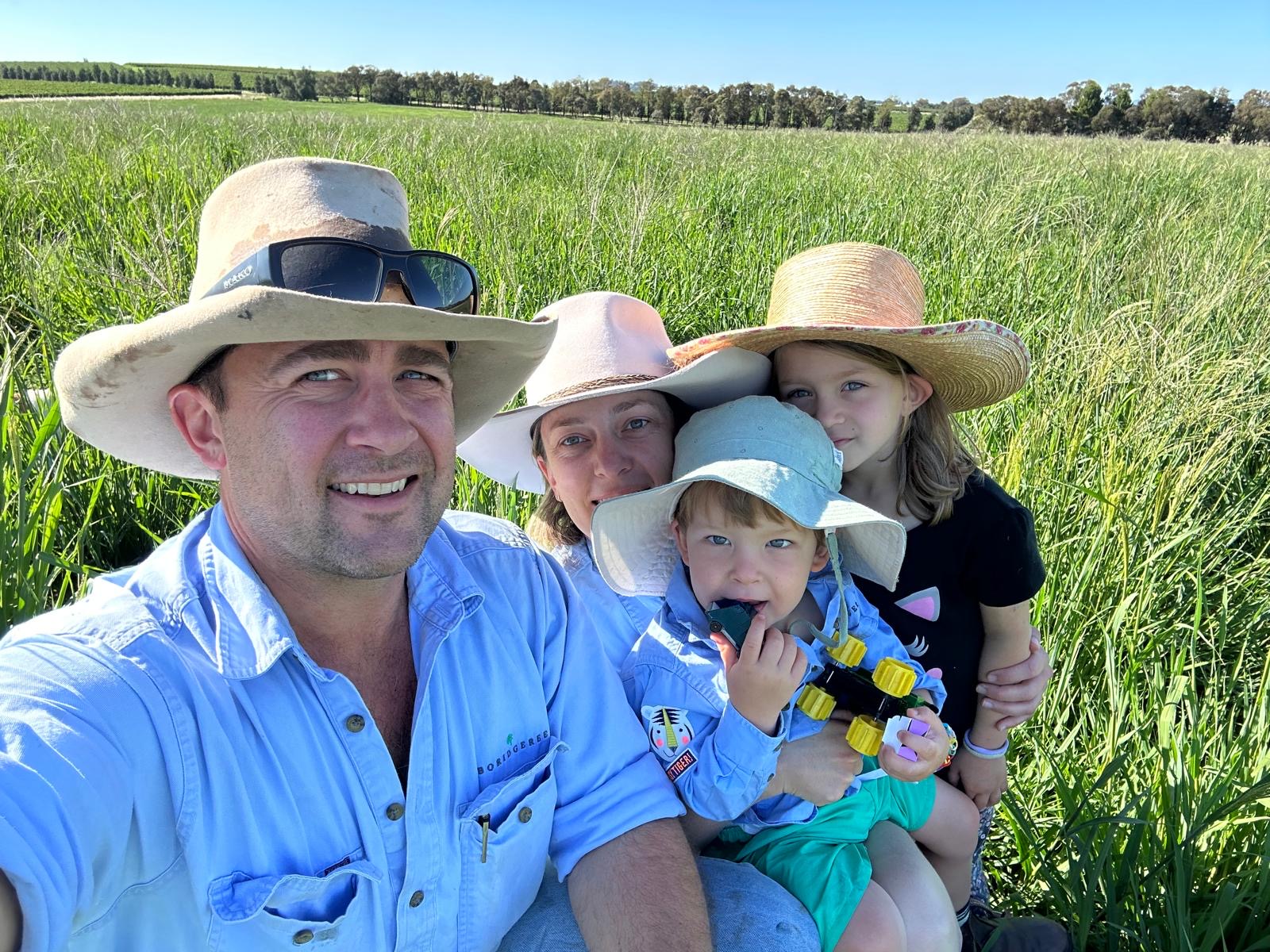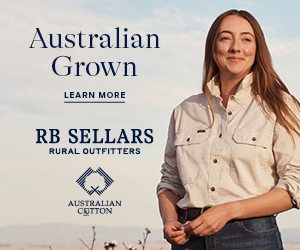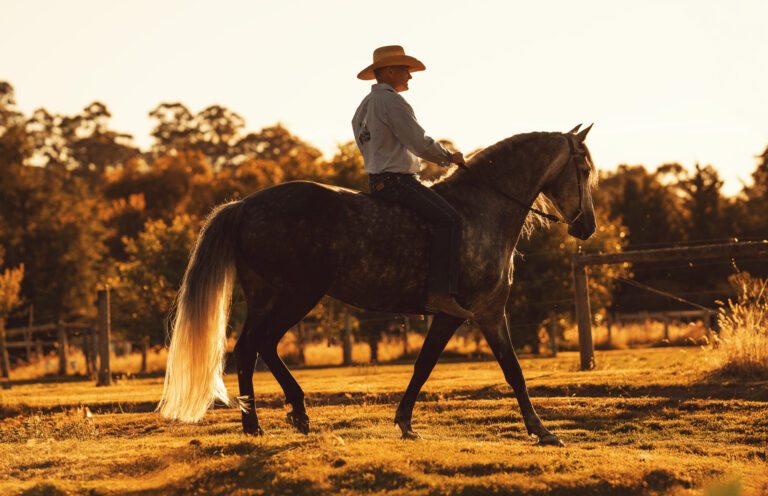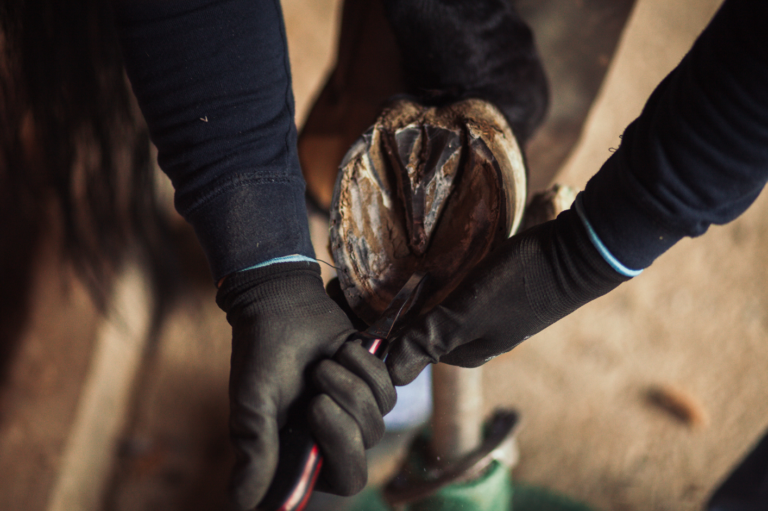It was long, hot and dry summer in many parts of Australia, however on the self-watering river flats of the Belubula River Charlie Blomfield is underway with a sixth cut of prime quality lucerne.
“We finish one cut and then we have 10 days off to do all the other things around the farm… and then we’ve gotta get back into the hay again! It’s the gift keeps on giving,” laughs Charlie.
It’s no fluke: Charlie and his wife Eleanor Falkiner purchased their 850-hectare farm, ‘Boridgeree’, in 2019 based on the fact there was no shortage of water. Growing hay wasn’t their original plan, but the property was ideal for it and their fodder business, GreatHAY, has grown from there. The business is now renowned for produced large quantities of high-quality hay that is demand from large equine operations throughout eastern Australia.

“Both of our families have been in agriculture for a long time; I’ve been in agriculture my whole career,” explains Charlie. “We were looking to buy a property of our own and as the 2017-2019 drought worsened, we looked for areas with water security. We weren’t necessarily looking for a fodder production business initially; we were focused on water, as well as proximity to an airport and work opportunities for El, as she works off farm.”
As so they landed four hours west of Sydney in Canowindra. “We didn’t even know where Canowindra was before we discovered the property,” muses Charlie. As it turned out, it was a well-known hay production area.
“We were new to hay… but the property is on the Belubula River and one of the unique things is the self-watering river flats. The lucerne in particular gets its roots down into the water, and we’ll get six cuts per summer without any irrigation. It’s a pretty unique production system and it means we have low water use.
“We then have some irrigated areas as well away from the river, where we grow other types of hay – including meadow hay, wheaten and oaten hay. We also grow cereal crops and prime lambs.”
Horses in the family
Naturally, Charlie and Eleanor have an equine connection. Both of their grandmothers were keen riders who competed in show jumping and eventing, while Charlie’s mother, Jane Blomfield, has been involved in dressage and eventing all her life. Today, she’s still close to the action as an event official.
“My wife and I both learnt to ride when we were little, so horses have been in our lives the whole way through,” explains Charlie. The family currently have two stockhorses, shares in racing thoroughbreds, and their young children are growing up in the saddle as well.
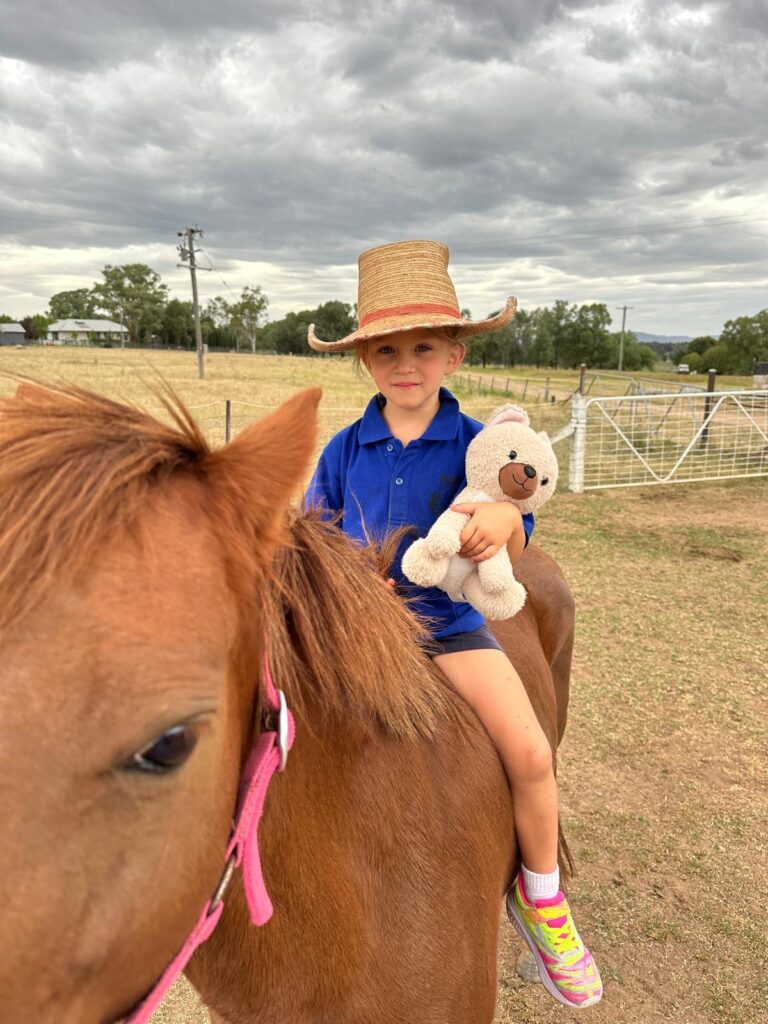
Doing things differently
Charlie recognises that in the horse world, small square bales are the preferred option – but handling and carting these bales can be quite inefficient. Enter the Bale Baron, a system that packages 21 small square hay bales into a single, manageable bundle, designed to reduce manual labour and increase efficiency for hay producers.
“They handle like a big square bale,” Charlie explains of the resulting hay package. “We can put more on a truck, faster, essentially handling 63 small bales per movement with the telehandler versus 15 the old way. We can get trucks loaded and out the gate much quicker.
“The Bale Baron production system, whilst part of the logistics end of the supply chain, it forces the hay making to be absolutely spot on,” adds Charlie. He explains that every bale is 770mm long and 25-27kg so it can pack together efficiently, travel well on the truck, and stack well in the shed.
Coming from a background in cotton and grain production where there are quality assurance systems and standards to adhere to, Charlie found it unusual that the hay industry had little in this regard.
“Everyone says their hay is ‘prime’… but what does that mean?” questions Charlie. “That’s where we came up with the idea of SustainaHAY: it’s a commitment from us around what we’re doing to make things better. This includes sustainability, hay quality and consistency, service… every aspect of our business. Producing high quality hay is one thing but producing high quality hay consistently and at scale – not 500 bales, but 10,000s of bales – that’s the key.”
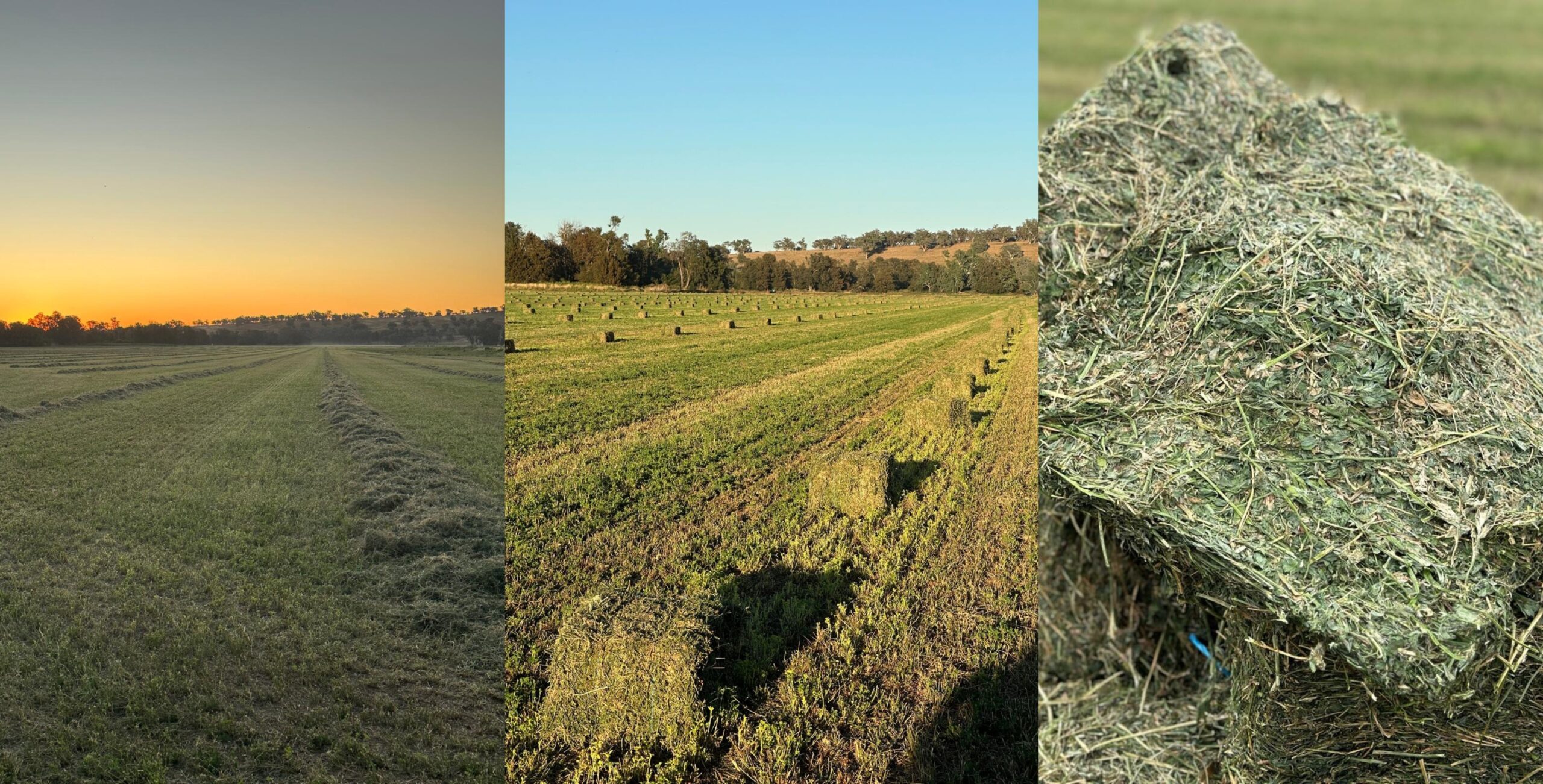
“Our customer is the horse…”
Ultimately, hay needs to be palatable for horses as well as meet their nutritional requirements. “Our customer is the horse,” says Charlie. To that end, knowing exactly what is in a bale of hay is critical.
“I’m trained in quality assessment, and we feed test every batch of hay. I find that people are becoming more knowledgeable about how to feed their horses, which is a good thing, and they have a better understanding of what types of feed suit different horses.
“The last meadow hay we cut was 15-16% protein, with around 9 megajoules of energy, and low in sugar. That’s as good as some lucerne advertised as prime by some,” notes Charlie. Last year’s meadow hay sold out in four weeks, so this year Charlie has quadrupled the area to meet demand.
“We make some lucerne that’s absolute rocket fuel… it can be 25% protein with 10.5-10.6 megajoules of energy. For some horses, that’s too much protein but for horses in full track work for example, it’s excellent. It’s perfectly balanced for horses are in full training or breeding as their nutritional needs are much higher.”
As Charlie explains, good quality hay is as important – if not more important – than the packaged feeds. “You can give them all the fancy packaged foods you like – with the dash of garlic, ginger, chilli and all the other things – but if the forage is wrong, you’re starting off with the wrong base. Horses are designed to eat roughage first, and then you balance it. If you pay more attention to the hay, you will probably save some money on the hard feed!”
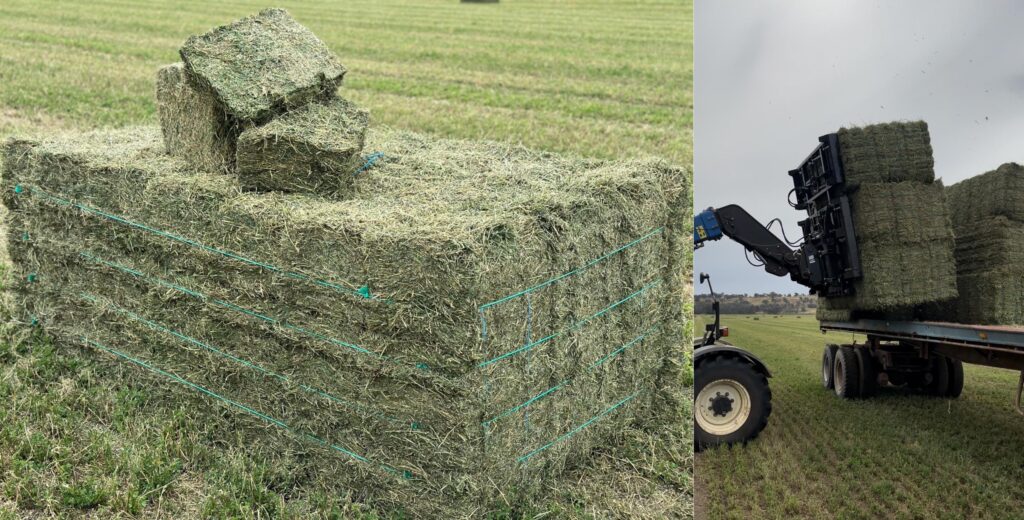
Horses don’t care about the colour
Charlie studied animal science at the University of Queensland, and he says that nothing he learnt in class – nor anything he’s learnt in 20 years of agriculture – has indicated that smell or colour alone accurately identifies quality hay.
“A horse doesn’t look at hay and say, ‘Oh, that’s not deep green enough… I’m not gonna eat that tonight’,” says Charlie. “There are a few myths in the hay game.”
Of course, smell and colour can be used to indicate bad hay – especially if it’s mouldy – however the nutritional quality is better identified by the amount of leaf versus stem, dust levels, and visible contaminants. And of course, a feed test to determine accurate nutritional values is the best way to know for sure.
At GreatHAY, all hay is feed tested and assessed – meaning Charlie knows exactly what is in each cut of hay, and therefore who it’s suited to.
“It means we can differentiate different products in our shed and describe them accurately when selling hay online. I know one lot is suited to a racehorse, while another is ideal for a typical equestrian horse, and the next is for a pleasure horse that’s just after bulk roughage. We talk to the owners and help them to buy hay that suits their horses’ needs.”
So what’s Charlie’s top tip for owners in search of hay? “Don’t go out just comparing a small bale on price alone, because there’s a lot to it. How heavy is it? Is it good quality? What’s the nutritional value? Because you could have a $20 bale that is 20kg and average quality, or you can have a $20 bale that’s 25 kilos and super high quality. Which one are you gonna go buy? Just because someone says it’s ‘prime’, doesn’t mean it’s great hay… the more you can learn about the hay you’re buying, the better – your horses will be fed well and you’ll get more bang for your buck.”
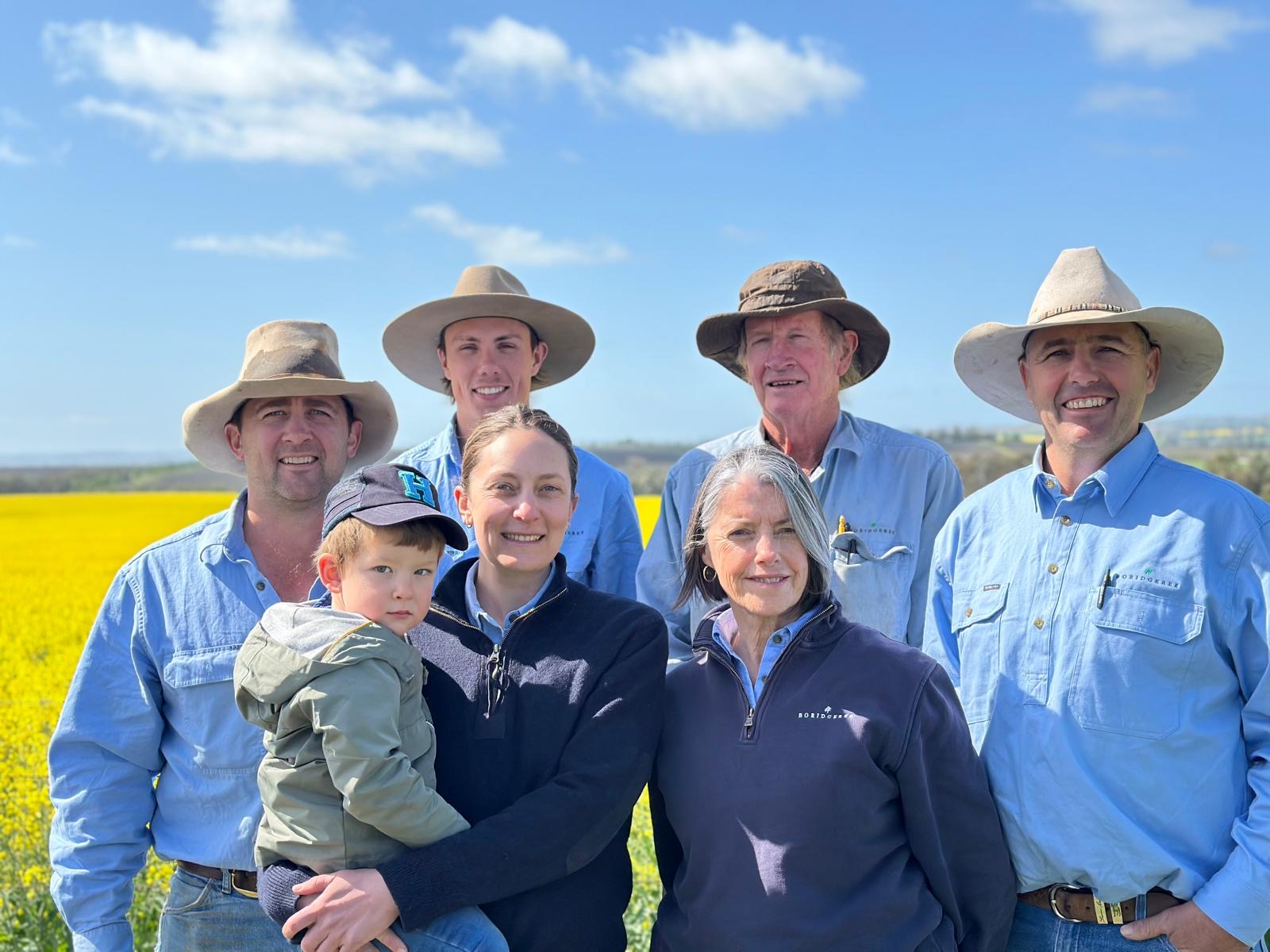
GreatHAY sells bulk hay direct to the public online and offers both pick and delivery options. Find out more and order online via their website here. You can also follow Charlie and the family’s comical take on farming at Boridgeree via Instagram.
